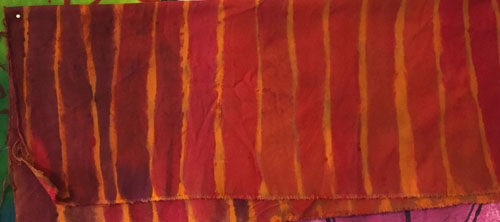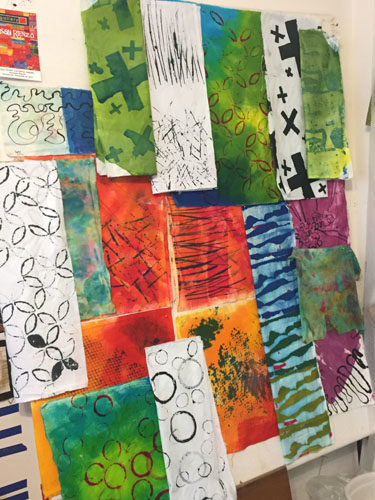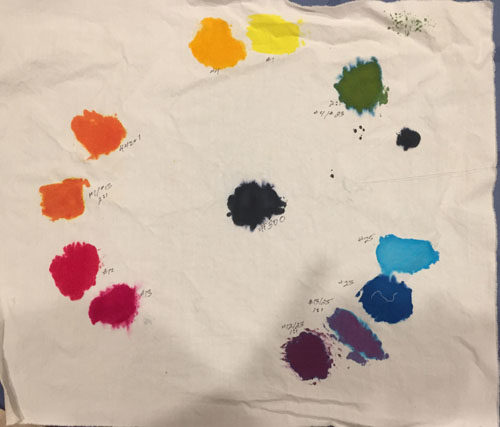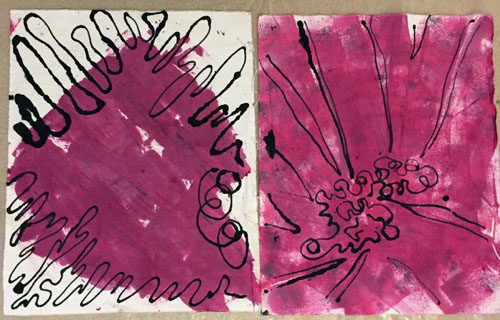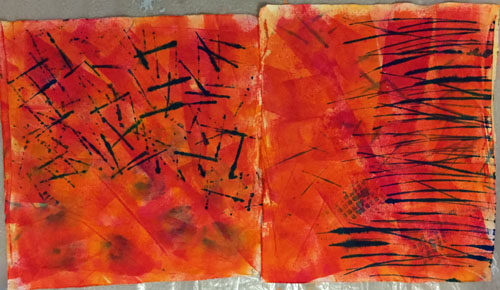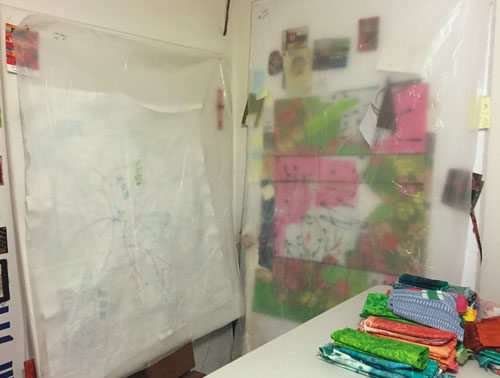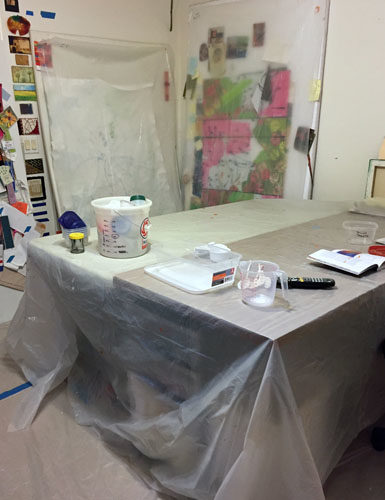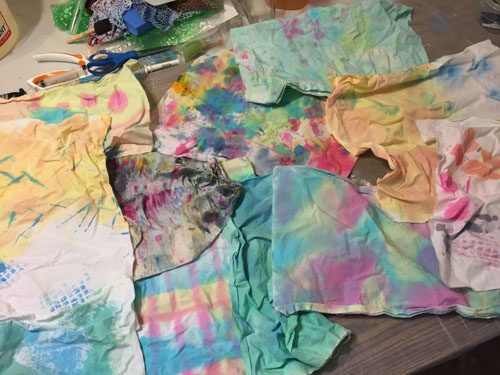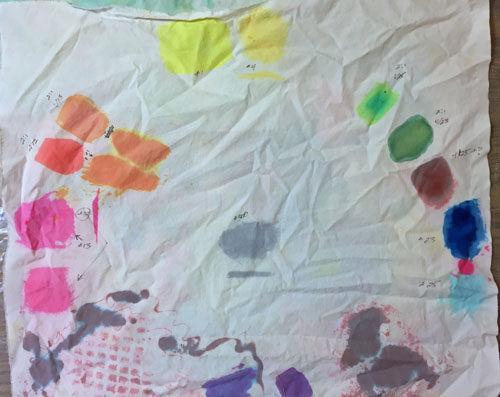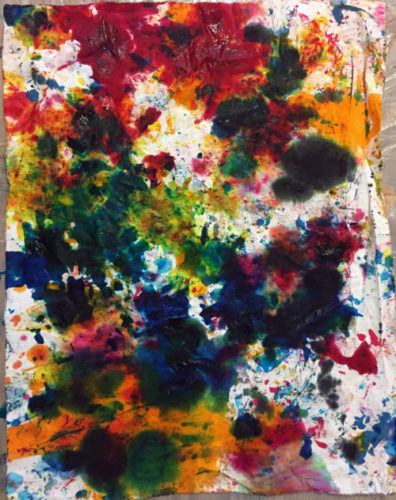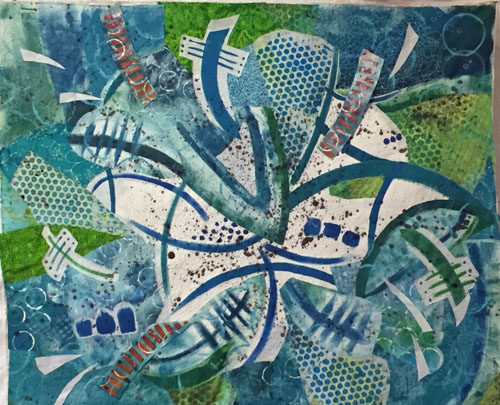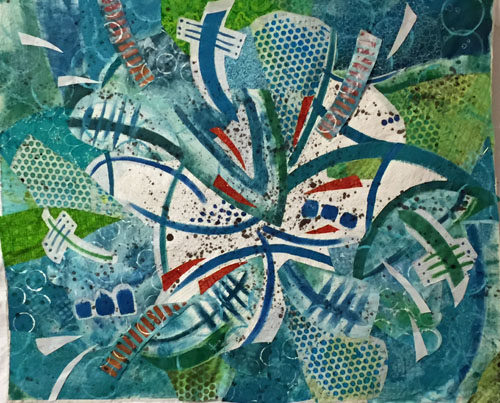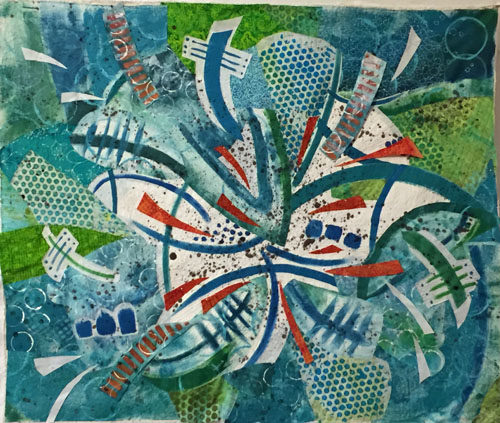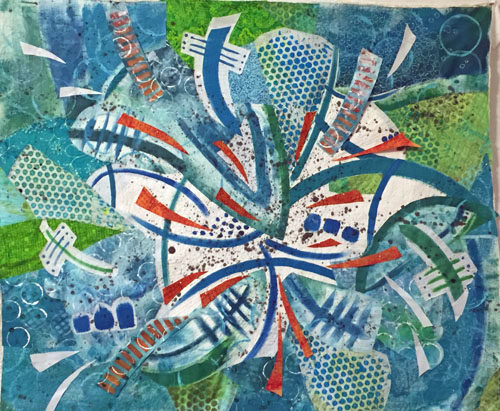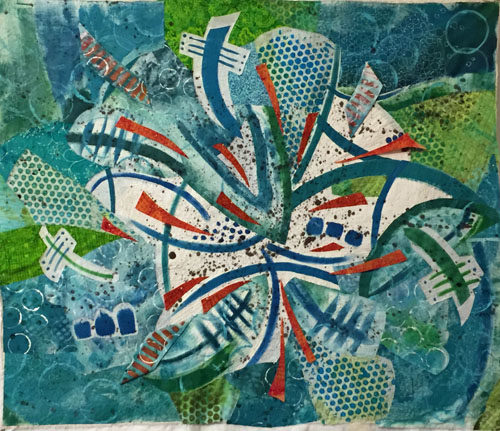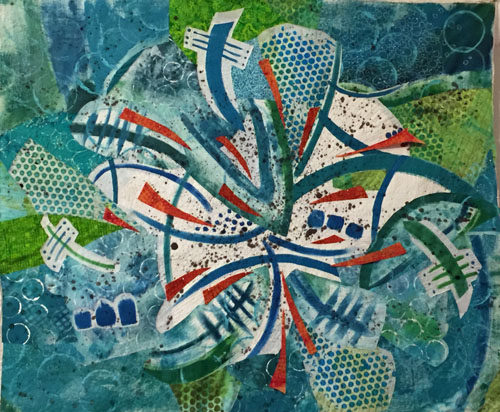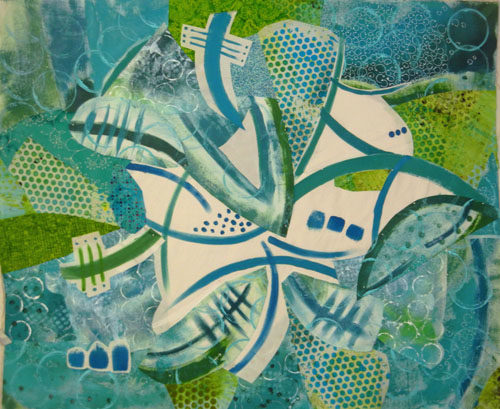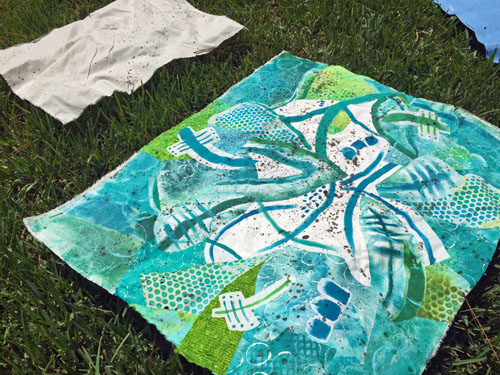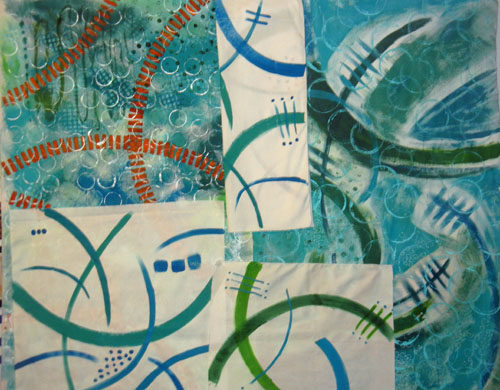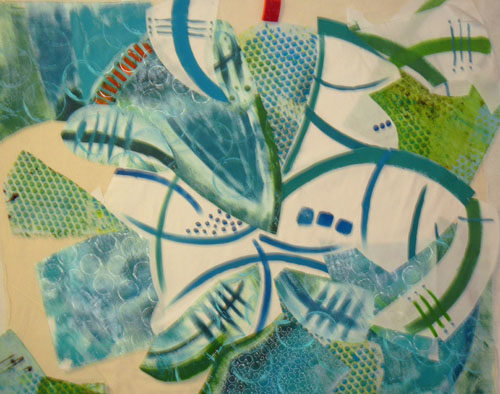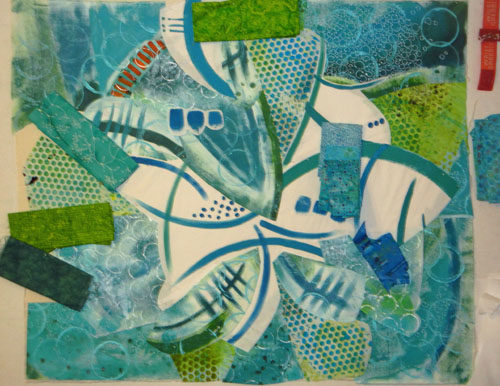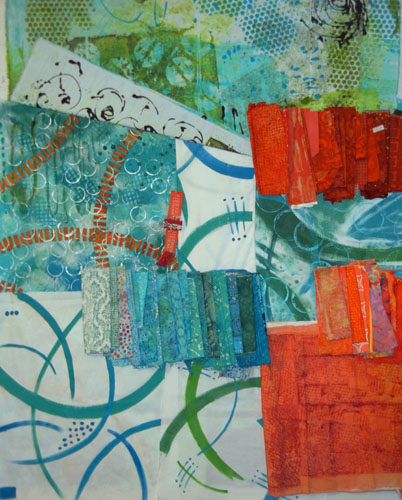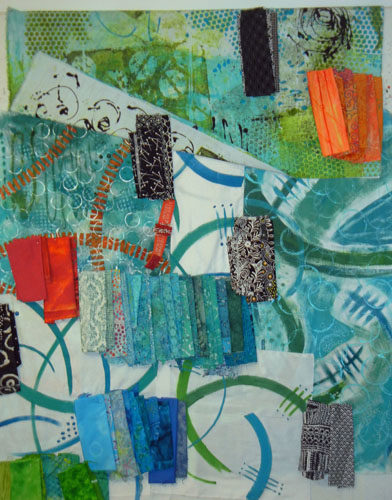One thing I’ve learned while blogging about my dyeing adventures is how to correctly spell the word. 🙂 Thanks to all you readers who pointed out the need for a letter E in the word dyeing. I think I’ve got it now. And I hope you’ll excuse my misspelled pun in the title.
34 fabrics, (nearly 8 yards,) and two weeks later, I’ve put a healthy dent in my goal to learn about painting with dye. And I’ve got some fabrics that I’m quite happy with. Some I over worked and some might benefit from more attention. But, mostly I’ve got very usable fabrics. Here’s the collection.
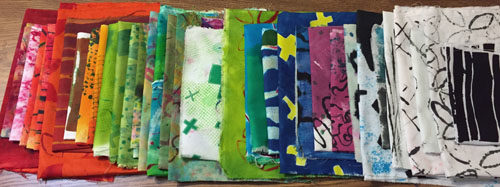
It looks like I’ll need to add some yellow next time. And probably some more neutrals.
Here’s a close up view of some of the fabrics pre-ironing. The pretty pink one is a clean up rag. (CUR in my notes.)

There are SO many different things you can do with fabric and dye. Some of very quick, like washing on thin dye, or dunking fabric into a dye vat. Others require a lot of time, with multiple layers, dry times in between, or tricky hand painting. I know I’ve only scratched the surface of the possibilities.
Here’s a case in point. I wanted to have a fuchsia motif with a blue background. But, since those two colors are near-complements I didn’t think I should overlap them. So, I stenciled on the fuchsia leaves and then painstakingly painted the blue on. Here it is in progress, with a little white intentionally left around each motif.

And here’s the finished result.
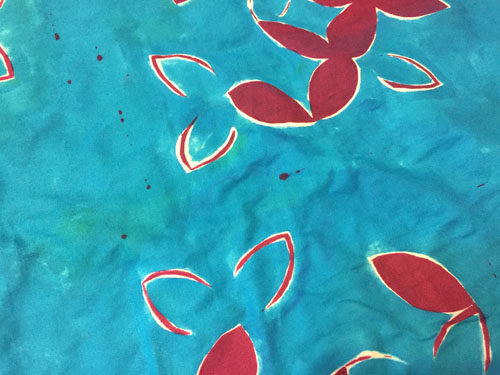
I love it, but I’ll need to find a faster way to produce such results. I’m sure there’s a resist product I could add on top of the fuchsia so then I’d be able to just wash on the blue. I’ll bet I could stencil the resist on, too. That would be a lot better. I’ll have to research it.
As much as I enjoyed the dye painting I was really ready to put away all the plastic and switch my studio back to a SEWING one. I just bought a new sewing machine, so I’ll finish stitching my current quilt. (I AM anxious to start a project with those dyed fabrics, though!)
Thanks for taking this ride with me.
Ellen Lindner



